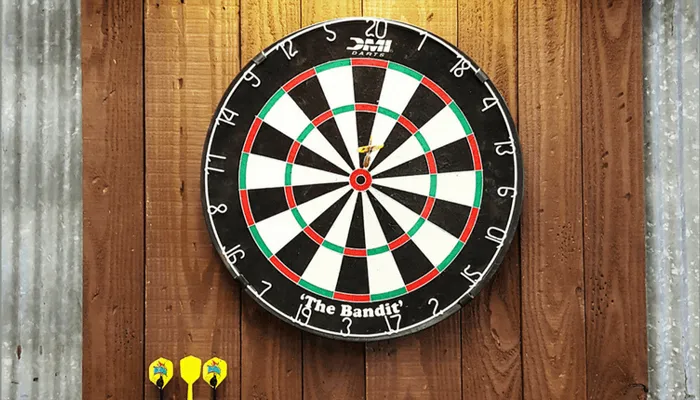Ever wondered why the numbers on a dartboard are arranged the way they are? You’ve probably thrown a few darts in your time, aiming for the bullseye or your favorite triple 20. But have you stopped to think about the reasoning behind the layout?
The pattern we now know originated in 1896 and was designed to make gameplay as interesting and challenging as possible.
The Evolution of the Dartboard
The numbers on a dartboard are arranged in a specific order to increase the skill level and reduce the chance of lucky shots. The order is designed to punish inaccurate throws by placing high numbers next to low numbers. For example, if you miss the 20, you might hit the 1 or the 5, which are much lower scores.
The origin of this order is not very clear, but some sources claim that it was invented by a carpenter named Brian Gamlin in 1896, while others say that it was created by a wire maker named Thomas William Buckle in 1913. However, there is no conclusive evidence to support either claim.
The order of the numbers on a dartboard, starting from the top and going clockwise, is: 20, 1, 18, 4, 13, 6, 10, 15, 2, 17, 3, 19, 7, 16, 8, 11, 14, 9, 12, 5

The History of Dartboards and the Numbering System
The numbering system we know today evolved over time. Originally, the numbers on the board went from 1 to 20, with the bullseye as the 20. This dates back to the origins of the modern dartboard in 1896.
As the game gained popularity in pubs across England, boards started including more numbers to make the games last longer. The clock-face pattern emerged, with the numbers 1 through 20 arranged in a circle, and the bullseye in the center. This allowed for a variety of games with different point values for each section.
Fast forward to the 1970s, and the standard dartboard numbering system was introduced. The board was divided into 20 numbered sections, each with a triple, double and single area. The numbers are arranged in a clockwise order from 1 to 20. The bullseye has a double and single bull. This setup allows for 301, 501 and other point-based games.
The numbering seems random at first, but there is a method to the madness. The numbers are placed to ensure an even distribution of points around the board. Sections with high point values like the triple 20 are directly opposite lower points like the 1 and 5. This provides balance and challenge. The pattern also allows for a variety of shot difficulties and point combinations.
FAQs
Many people wonder why the numbers on a dartboard are arranged the way they are. Here are some of the most frequently asked questions about the dartboard number sequence:
Conclusion
So there you have it, the reasoning behind the sequence of numbers on a dartboard. While it may seem random at first glance, there is actually a method to the madness. The pattern provides the perfect level of difficulty for players of all skill levels to achieve the challenge and thrill of the game.
The next time you’re at your local pub ready to throw some darts, you’ll have a new appreciation for how the board is set up. After a few drinks, the bullseye may start to look more like a moving target, but at least now you know why the numbers wind up in that funny order. Pretty clever of those medieval Brits, eh?


